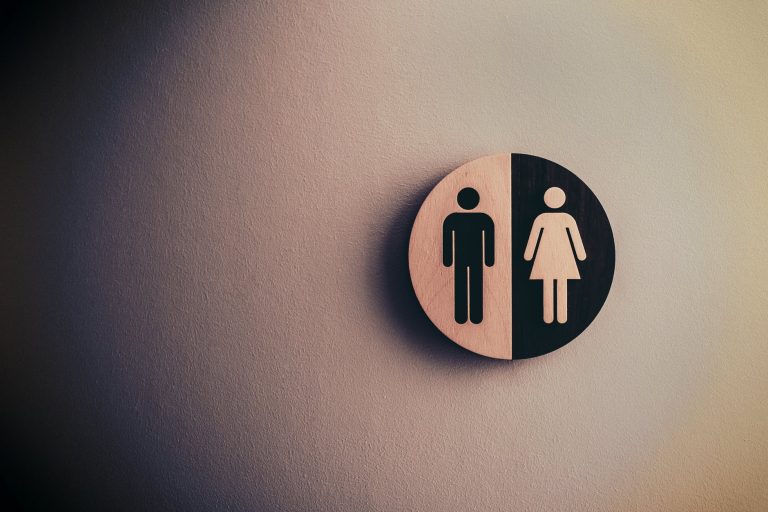Sex-disaggregated data are data that are collected and analyzed separately on males and females. This typically involves asking the “who” questions in an agricultural household survey: who provides labor, who makes the decisions, who owns and controls the land and other resources. Or it may involve asking men and women about their individual roles and responsibilities.
Human interactions form societal organizations, these reflect in different levels of society and are embedded in our day-to-day activities. The mirroring of these in design is clear through humanity and its different eras; one can see how architecture and fashion correspond to the religious, social, economic, and geographic contexts, among other factors of where and when they were created. The same can be argued with the design process of institutions, policies, and systems. Now, with paradigm-shifting movements, it is crucial to rethink how much our current world has been influenced by archaically designed structures, in both physical and organizational ways.
This reevaluation is called “Design Thinking”; a process for creative problem-solving. Design thinking has a human-centered core, and it encourages organizations to focus on the people they’re creating for, which leads to better products, services, and internal processes. However, there is a need to take a few steps back, because only by analyzing from a different perspective one can spot the design flaws that have a significant impact on our environments.
Sex-bias data is a major design flaw affecting everything we build, its consequences impact at least half of the world’s population. It’s everywhere and it’s hard to notice. The majority of people that have made choices on how things should work have been, historically, male. This is not the problem itself, the problem is little or non-existent consideration of women’s perspective and needs. The flaw’s range is so wide it’s reflected on how most of the people, when asked to think of a professional, will firstly and automatically, think of a man.
This huge data gap is on and for women when designing almost everything. And there are major consequences for that reflected in society. We have a fallacy of the
default male, when we are designing something and the gender is not specified, we will most probably think of a man. This default leads to excluding the necessities and singularities of multiple groups of society, women being the largest one.
Thinking of man as a default results in serious consequences. People developing tech, policies, medical research are creating really serious results for women. Take city planning as an example; the roads that are designed to easily access or leave the city, the once-a-day arteries, on-the-way to work and coming-back-home road are thought for men who need simple, not stressful, communication means. However, there is little or no thought put in to how to facilitate the flow within the cities, diminishing the day-to-day activities of the women that stay in town and are moving around, activating the local economy and forming a big part of the GDP.
The City Council of Karlskoga, Sweden, decided to flip the snow-clearing policy; they started by clearing out the minor streets and sidewalks, only followed by the major big arteries. This dramatically reduced admissions to emergency rooms, as travel patterns for women are much more concentrated in these areas that weren’t prioritized before. The simple thing of changing the order of how they cleared snow had a significant effect on the healthcare bill.
From this, we get that the snow clearing policy was poorly designed. Even though it was unintentional, it was designed for what worked for men. They forgot, as happens very often in public policy, that women constitute a big and vital part of societies.
Another example is car crash design tests. Crash-test dummies are designed as males, thus the cars can’t be later designed with features that protect women’s anatomy. There’s no seatbelt for women’s chest or pregnancy, and also the car pedals are designed to adjust to men’s legs length. All of this together results in women being 47% more likely to be seriously injured in a car crash.
The data-bias is not limited to the physical world, but also the medical research is based on a man’s body, so women constantly get misdiagnosed. Women are more likely to die after a heart attack, this varies reasons but starting from the point that the heart-attack symptoms we have been told are based on men’s experiences.
As the symptoms for women are different (breathlessness, nausea, fatigue) most of the times women don’t go to the doctor, and even if they do, doctors are more likely to misdiagnose them, reinforcing the pattern of seeing men heart-attack symptoms as being the default and women’s being a niche variant.
Women’s physiological body or society roles haven’t been incorporated into societal design. Life is full of really simple and small details that should’ve been caught in the designing stage and make the entire outcome fairer. Now it’s harder to recognize them because we are numb to them. We don’t see it because we were born into these patriarchal parameters.
The situation can be either overwhelming and demotivating, or challenging and inspiring. As the revolution design thinking is happening, it is now the time to incorporate sex-disaggregated data. Starting off with the bases of what women actually need and want, to then shift the conversation to a building approach, in which society is not limiting gender into damaging roles through design.
Talking to women, gathering data, and including them in the design thinking process the whole time, will lead to more equitable planning. Not only giving more justice to women and their roles in society, but also to the internal systems and the interactions with the world. It’s time to move beyond male and female binaries and collect and analyze meaningful data on each’s relationships to their surroundings. Realizing that gender relations are dynamic and change over time, and the way we are designing the world today will set patterns of behavior, emotions, and, relations of the generations to come.
SDG #5 talks about Gender Equality. It is too easy for societies, companies, and individuals to not take into account half of the earth’s population. We dismiss this issue at our own peril. Alternatively, we can embrace gender equality and understand that the implications go far beyond making marginalized individuals feel better.
There is a real cost to discrimination – whether its the health bill going down after rethinking route design as mentioned or the boost to an economy that can come about by adding women to the workforce. We must work hard to see the place and instances where equality can be an agent for good, growth, and harmony. If we fail to do so, we will bear the consequences.





